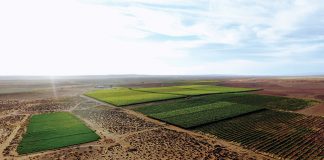Purdue University professor of agronomy Tony Vyn looked at nitrogen-use studies for maize from two periods – 1940 to 1990 and 1991 to 2011. The aim was to establish if increased yields are due to better nitrogen efficiency or whether new plants are simply given more nitrogen to produce more grain – a common criticism. He found that modern hybrid maize varieties use nitrogen more efficiently, leading to higher grain yields.
Modern hybrids might take up more total nitrogen per hectare during the growing season than they did before, but the amount of grain produced per kilogram of nitrogen accumulated in maize plants is substantially greater than it was for maize hybrids of earlier decades, explains Prof Vyn. Working with doctoral student Ignacio Ciampitti, he analysed about 100 worldwide studies. Of these, 870 data points were taken from the earlier period and 2 074 were taken from studies after 1990, when transgenic hybrids started hitting the market.
All the studies looked at total nitrogen uptake and grain yield in maize plants at maturity, usually in response to multiple nitrogen application rates. Grain yields in these studies averaged about 8 994t/ha of maize over the past 21 years compared with an average of 7 233kg in the previous 50 years. In the earlier period, 453g of nitrogen applied to a land produced about 49kg of grain. In the more recent period, the same amount produced about 56kg.
Less space
Prof Vyn says genetic improvements have led to maize plants that require less space, allowing growers to squeeze more plants in a land. Modern lands average about 71 400 plants per hectare, compared with 56 340 plants per hectare from 1940 to 1990. Yet the maximum individual plant nitrogen uptake stayed exactly the same despite an average gain of 14 826 plants per hectare. “Modern plants are just more efficient at taking up nitrogen and utilising it than they were before,” he says.
Prof Vyn and Ciampitti are working toward methods to increase grain yields further by investigating the contribution of nitrogen to plant biomass and yield formation processes in high-yielding hybrids under a wide range of nitrogen inputs and production stress factors. Dow AgroSciences, PotashCorp and the US Department of Agriculture’s National Institute of Food and Agriculture are funding their research.













